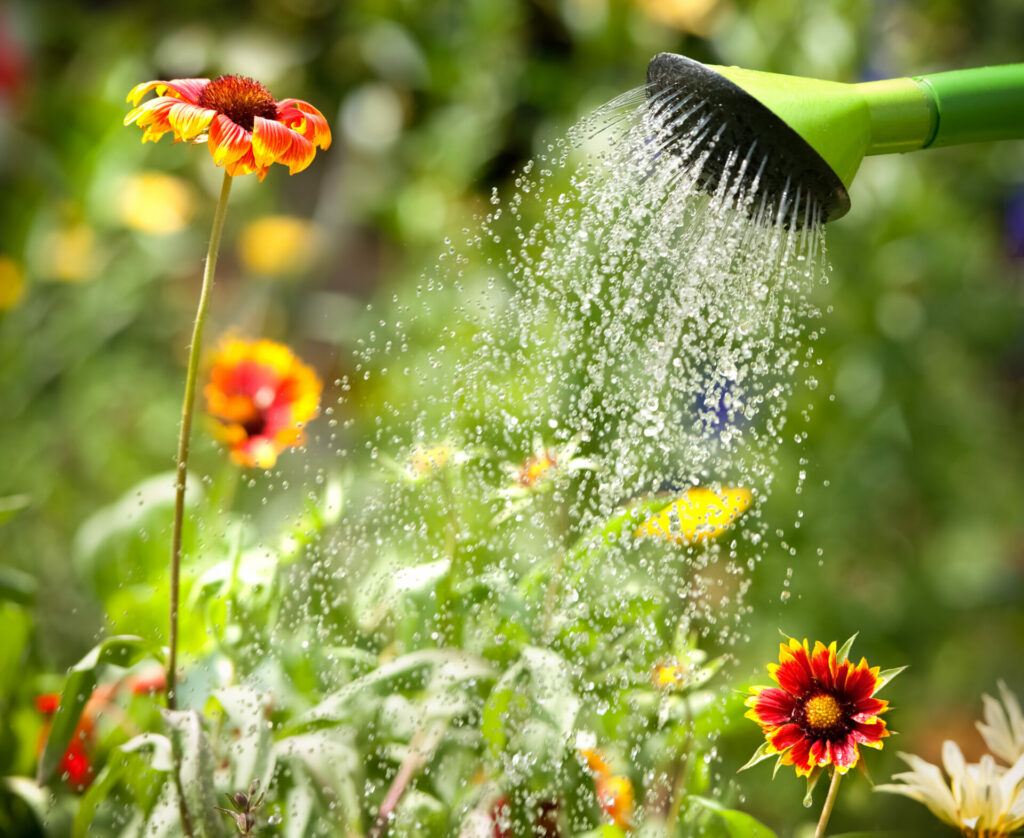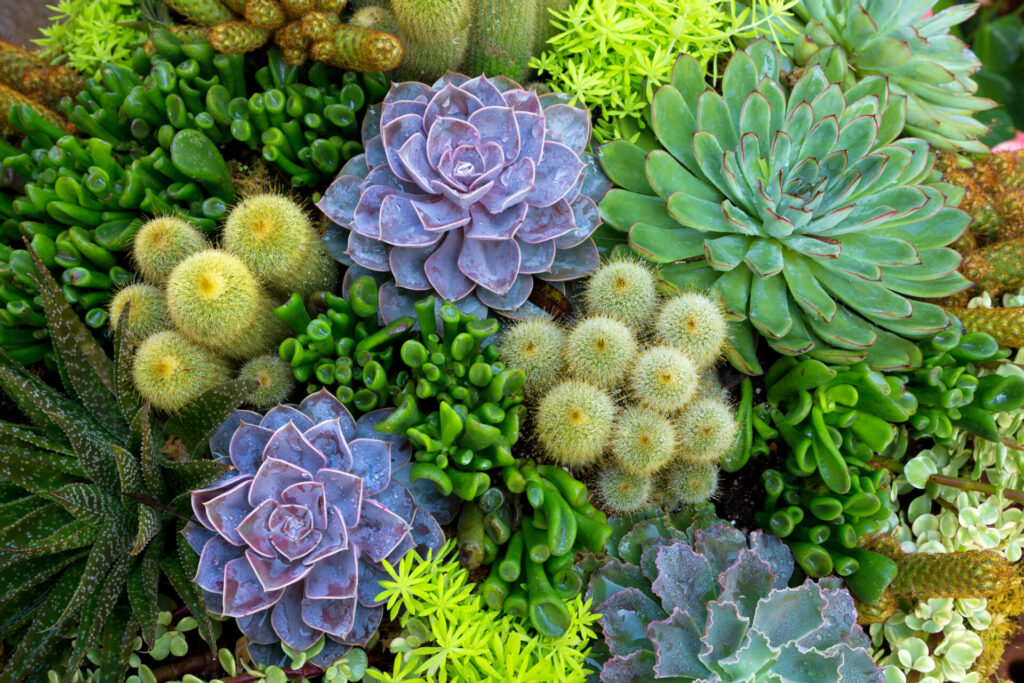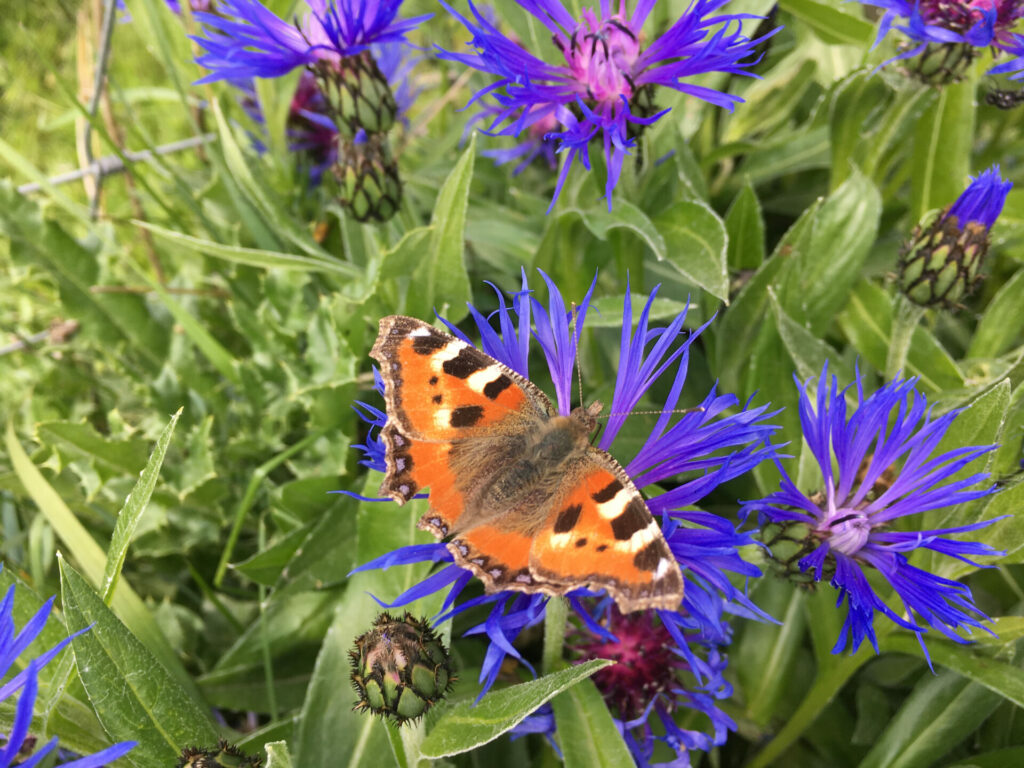It may seem like gardening is a pretty green activity. Our gardens can be a hub for wildlife and pollinators, a place where we harvest homegrown veggies, and garden trees can help sequester carbon dioxide.
However, many of our garden activities have a big environmental impact. Things like watering, feeding, mowing, sourcing plants, dealing with ‘pests’ and the landscaping you choose can all have a positive or negative environmental impact. Here’s how to make your garden truly greener, even in the smallest spot or with hot, dry weather to contend with.
Make your own compost
Turn all your garden’s green waste into compost to help nourish your soil and plants. This helps reduce the need for shop-bought compost, as well as reducing the emissions linked to taking your waste away. If you have especially dry or heavy soil, incorporating homemade compost can also help retain more water and nutrients.
However big your space, the key to good compost is an even balance of green material (plant waste, veggie scraps, grass cuttings) and brown material (dry leaves, cardboard, newspaper). Ensure you turn your heap regularly using a fork, keep it warm with a cover, and water to create a moist but not soggy environment. If you lack space, consider a small compost bin or countertop composter, such as the Bokashi bin.
Water wisely

To make the most of your water, only water plants late in the evening or very early in the morning. Avoid spraying over your plants, but water directly onto the soil at the base of the plant to reduce waste. There’s no need to water every day and plants will actually be healthier with a really good soak every few days. Sandy soils are fast-draining so try mulching around the crown of plants with woodchips or shingle to help retain water and also supress weeds.
Wherever you can, recycle your water. Water butts are a good option if you live in a rainy climate, but you could also use grey water from your home. Use a washing up bowl to collect waste water from your kitchen, and a small bucket carefully placed in your shower to collect used water. These can be poured as and when needed onto your garden and plant pots.
Choose drought-resistant plants

Follow the rule of ‘right plant, right place’. If you have a shady, dry or sunny garden, choose plants that thrive in those conditions. A happy plant in the ideal spot means you won’t need to water or feed as often or replace a struggling plant. This is all the more true when it comes to hot climates. Choosing drought-resistant plants means you will need to water less, and the plants won’t suffer during hot spells. These include lavender, rosemary, aloes, tropical hibiscus or pulmeria. For a hot, dry garden, consider creating a rockery which mimics these plants’ natural environment.
Natural solutions to garden ‘pests’
We’ve long thought of things like slugs and aphids as pests in our gardens. However, research now shows we need to learn to welcome these in our gardens and recognise the important role they play in maintaining a healthy ecosystem. Try to accept a little bit of damage to plants and think of this as sharing with wildlife. Rather than reaching for pesticides and chemicals, let nature manage the natural balance in your garden. For example, ladybirds and their larvae will feast on aphids, birds will eat slugs and snails, and lacewings consume aphids and other small insect ‘pests’. Try to encourage more wildlife into your garden and protect any especially vulnerable crops with barriers like Enviromesh. If the slugs still persist, collect them when they are most active at dusk and relocate them to a field or park.
Care for your soil
Healthy soil means healthy plants, which are more resilient to diseases and produce better crops and flowers – reducing the need for herbicides, fungicides or pesticides. Feed your soil with good quality organic matter, such as garden compost or mushroom compost. This is especially helpful if you have poor, sandy soil, or like to grow in pots. Sandy soil is usually low in nutrients and drains quickly. Adding compost helps give your plants a boost, retains water and makes the earth easier to dig and maintain.
Create a home for wildlife and wildflowers

Encouraging wildlife into your garden is not just a joy to see but also helps maintain natural balances. Many of our instincts as gardeners can disturb this, so try to avoid the temptation to keep all areas perfectly tidy. Leaving an area of lawn unmown can reward you with wildflowers and a habitat for wildlife. When plants are dormant, leave dead plant matter such as seed heads and old leaves, rather than clearing flower beds. These offer food and habitat for wildlife and will break down naturally. Could you also add some wildlife homes to your garden, such as a pond, bird table, bug hotel or solitary bee house?
Look for peat and plastic-free
Peat bogs are a vital carbon sink and a rare habitat, so avoid any compost or potted plants containing peat. If a product is peat-free, it will be clearly labelled. Some garden centres now sell peat-free compost, fertilisers and seeds as a refill to help you avoid plastic. Many plants are still sold in plastic pots, so always try to reuse them. Better yet, avoid buying new plants by propagating your own, using cuttings from friends and family – it’s rewarding and low-impact.
Plant a tree
A tree can absorb more than a tonne of carbon dioxide over its lifetime, as well as providing a habitat and food for wildlife. There’s a tree to fit every garden, and varieties such as apple, cherry, hawthorn or rowan all provide beautiful flowers and fruits. In hot, sandy gardens, choose a date palm, flame tree, citrus tree or banana tree. If you lack space, consider planting a small shrub. Some trees can also thrive in a large pot, such as citrus, olive or fig trees – perfect for a balcony or patio.













